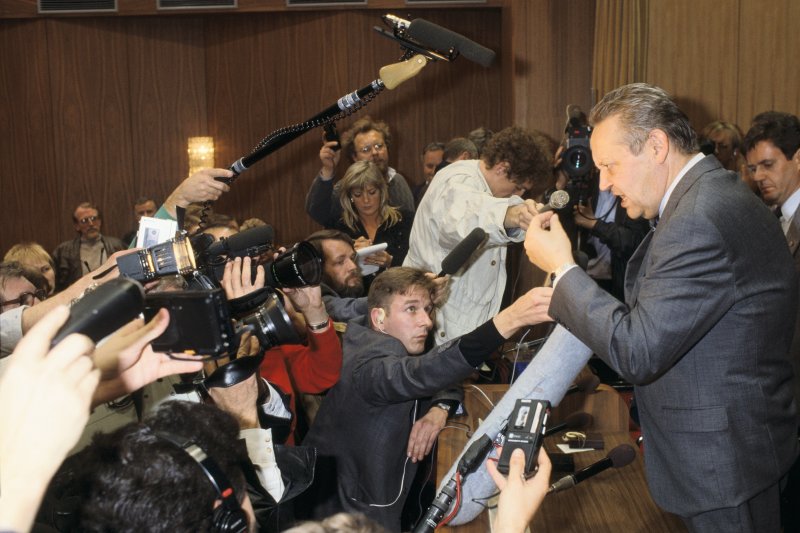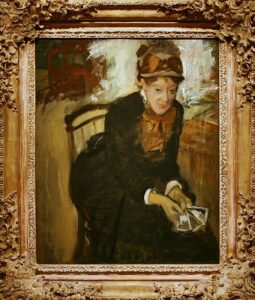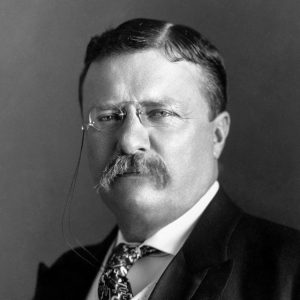The evening of November 9, 1989 quickly became a historical one as Günter Schabowski, an official of the Socialist Unity Party of East Germany, announced in a press conference that the inhabitants of East Germany could now travel to the West German side of the Berlin Wall after acquiring a simple travel visa. The announcement had a life-changing effect on the two German societies, West Germany and East Germany. There are also other factors that contributed and led to the fall of the Berlin Wall. But before we examine that remarkable night, let’s travel back to May of the same year, 1989.

The story really begins earlier that year, outside East Germany, at the border between Hungary and Austria. On May 2, the Hungarian government began to tear down the barbed wire fence that separated communist Hungary from the NATO-member country of Austria, which became an emotional gesture, as it allowed inhabitants of East Germany a route to West Germany that had been denied to them since 1949. East Germans often went on vacation to Hungary each summer, but in this particular summer of August 1989, as they traveled on vacation to Hungary, they kept going, through Hungary to Austria without any problems. And once in Austria, it was a simple matter of continuing on to West Germany. This event should be consider the first brick falling from the Berlin Wall.1
Then, on June 18, another major event took place outside of East Germany. Poland held elections for the Sejm, the lower house of the Polish Parliament, and for the Senate. For the first time in Poland’s history under the communist system, the non-communist political opposition group Solidarity was allowed to take part in the election process; the Polish Communist Party, in power for decades, felt the pain of a massive defeat. On that night, Solidarity won 92 of the 100 seats in the senate.2

These external events were noticed by East German citizens. East Germans themselves began to take action. Many strikes were held, one after the other, against the East Germany government. Revolts such as Neues Forum (New Forum), Demokratischer Aufbruch (Democratic Awakening), and Demokratie Jetzt (Democracy Now) incentivized East Germans to get prepared for an upcoming massive movement that started up in a church at Leipzig, East Germany.3
It all started in the summer of 1989, when East German citizens began attending Monday evening meetings at Leipzig’s Nikolaikirche, one of the major churches of central Leipzig, where they prayed and talked about politics. At the beginning, the movement was confused and politically naïve. But as the meetings grew larger and larger throughout the summer and into the fall, the sessions eventually turned into a major movement in the center of Leipzig. It turned into a wave of massive demonstrations that spread out through East German cities and helped Leipzig gain political strength and power for the upcoming main event. The meetings reached a high point on October 9, which has subsequently become a special day in German history. People flooded the streets of Leipzig with banners and chanted “Wir sind das Volk,” or We are the People.4
The strikes, combined with the events in Leipzig, finally led to the resignation of Erich Honecker, leader of GDR Germany, on October 18, 1989. He was replaced by Egon Krenz, who would be the last Communist leader of East Germany. The resignation of Erich Honecker motivated a yearning of the East German community to search for some new, desired future.5
By November, the huge demonstrations of Leipzig had spread to many other cities in East Germany, particularly to East Berlin. On November 4, East Germans escalated their protest throughout the country, demanding free elections, like Poland had just done. The crowd’s banners explained the needs of society with messages such as “40 years are enough” and “No lies–new people.”6 Up to this point, the idea of the wall falling was unimaginable; East Germans simply wanted to reform their government. They particularly wanted the ease and freedom to travel to West Germany without having to make the circuitous route through Hungary and Austria.
Then, on November 9, 1989, a press conference broadcast on live television in East Berlin changed the lives of East Germans forever. At 6:50 p.m., Günther Schabowski, spokesman for the East Berlin Communist Party, announced revised travel rules, which allowed East German inhabitants to leave the country with the use of a Visa.7 A journalist followed up Schabowski’s answer with the question, “When does it take effect?” Schabowski looked up and asked with confusion, “What?” Concerned and bewildered, the audience started to ask questions among themselves, which caused an uproar. After receiving such an important announcement, the crowd became worried that the travel rules would not be implemented in a timely manner, that this was just another government trick or delaying tactic. Günther Schabowski scratched his head, relocated his glasses, and casually replied in German, “Ab sofort.” In other words, immediately. No two words could have been more electrifying to those who heard them. Their implications were unfathomable, as East Berliners by the thousands began to process those words.8
Many East Berliners (and the world) at the beginning could not believe what they had just heard. News outlets and television stations began sending the breaking news that people could now freely pass through to West Germany by the border crossings in East Berlin. They no longer had to go “on vacation” to Hungary, through Austria, to get to West Germany. They could just go through the checkpoints between East Berlin and West Berlin.9 Even though the announcement was not supposed to initiate new traveling rules until the next day, Schabowski had been unaware of this. This supposed press conference became the trigger for a huge crowd to move towards those checkpoints at the wall. Thus, the phrase “Ab Sofort” was the unexpected catalyst of the East Germans’ liberation. As East Berliners moved towards the wall, they could see guards allowing the crowd into West Berlin. By 11:30 p.m., the wall was overflowing with people from both sides.10
As East Germans passed through the wall, they walked down the memorable street Kurfurstendam, or as West Berliners called it Ku’damm. As they walked down this street, lined with luxury stores of all kinds, they were simply amazed by the beauty and opulence of West Berlin. And, these East Germans could not believe that they were finally reuniting with their countrymen and kin. Kurfurstendam became a memorable place as East and West Germans walked down this stunning street together. The tears and joy could easily be seen through both the East and West Germans’ faces on that night. The scene then moved to the Berlin Wall itself, where East Berliners and West Berliners began climbing that symbolic wall of oppression. They danced on that wall that night, East and West. And they began taking hammers to that wall. That night began the end of the Berlin Wall. The chants of the East Germans’ “Wir sind das Volk” became “Wir sind ein Volk” for the first time that night.11

The events leading up to the fall of the wall were caused by both deliberate and unwitting actions. East German citizens had deliberately and determinedly protested their communist leadership, leading to the day when Schabowski accidentally guaranteed the overnight destruction of the wall. That night, Germans began a massive celebration with euphoric and victorious feelings. The news spread quickly to countries all over the world; these nations could not believe the wall was coming down either, and they held celebrations, which continued well beyond the sunrise of November 10. The joy the German people shared after such a long period of time, since 1961, continued throughout the night; the atmosphere was indescribable. Subsequently, the simple phrase “Ab Sofort” became an unforgettable and everlasting part of German history.
- Walter Mayr, “Hungary’s Peaceful Revolution: Cutting the Fence and Changing History,” Spiegel Online, May 29, 2009, http://www.spiegel.de ↵
- Steve Crawshaw, “Fall of the Berlin Wall: A people’s uprising that grew until it remade Europe,” Independent, October 28, 2014, http://www.independent.co.uk/us. ↵
- Alan Woods, “The Fall of the Berlin Wall,” Marxism, November 9, 2009, https://www.marxist.com ↵
- Andrew Curry, “We Are the People: A Peaceful Revolution in Leipzig,” Spiegel Online, October 9, 2009, http://www.spiegel.de/ ↵
- “Chronicle of the Berlin Wall,” Chronik Der Mauer, http://www.chronik-der-mauer.de/en/. ↵
- Derek Scally, “How the Berlin Wall Fell: A Chronology,” The Irish Times, November 7, 2014, https://www.irishtimes.com/. ↵
- Günther Schabowski, “Announcement That DDR Border Will Open,” September 21, 2011, https://www.youtube.com/watch?v=b8GzptqhT68. ↵
- Michael Meyer, “Günter Schabowski, the Man Who Opened the Wall,” New York Times, November 6, 2015, https://www.nytimes.com ↵
- BBC News, “The Fall of the Berlin Wall,” January 22, 2011, https://www.youtube.com/watch?v=fjNz1lvXgzU ↵
- Derek Scally, “How the Berlin Wall Fell: A Chronoogy,” The Irish Times, November 7, 2014, https://www.irishtimes.com/. ↵
- “We are the people” became “We are one people.” ↵



49 comments
Cameron Lopez
I remember learning about the Berlin wall in high school. TO this day I still do not truly understand why a nation would split. Although my class explained it quite well I just suppose personally I don’t understand. But this article does a great job explaining the detail of the event and I really enjoyed reading the article. Great job.
Priscilla Reyes
Thank you for your article! I did not know people had to travel more than necessary to get to their desired destination due to the border blocking their way. I can only imagine how these people felt when they heard they could now freely cross. I am amazed at the meetings the people organized and how they grew with time. It reminds me of the fact that we must pray for everything, including our country and President. This way they created peace and comfort and eventually caused change, too.
Engelbert Madrid
This article gave me further knowledge of the Berlin Wall, in which focuses on how two simple words could lead to the destruction of the wall that separated Eastern and Western Germans. In some way, the journalist that asked Shabowski, “When does it take effect?” challenged politicians to answer immediately. For many Germans, this was a crucial moment, because it lead to the destruction of the wall that separated families and friends.
Gabriela Ochoa
I remember learning about the Berlin wall but only that it fell after so many years, but never new the true facts of why and how it would come to fall. I never knew that the people of east Germany would “go on vacation” in Hungary to get to West Germany or the communist government had been taken over by a non- communist group. To read about the free travel between the wall for the Germans on both sides and to read about how much relief they felt to be able to cross without committing a crime or going on a “vacation” was amazing. Overall, a really great article.
Stephanie Silvola
The Berlin Wall creates an emotional impact for both sides of the wall. Understandable that people are emotional to have it torn down. The Berlin Wall is used as a moment in history to remind us that some nations are not as united as it claims to be. The number of reports made because of the people crossing the wall to the other side and shot down is heartbreaking and I think the article captures that.
Victoria Rodriguez
You told this history so eloquently. The imagery of the two sides coming together in celebration was a beautiful one. Your information in the article was easy to follow and kept true to the timeline. I also appreciated the video and picture you included, it added to the emotions and history. If someone was just learning about the Berlin Wall and it’s fall, your article would be able to inform the person in a timely fashion without any confusion.
Tyler Sleeter
Great article with lots of information. I liked how you included the emotional impact of the Wall coming down along with the historical information. I have heard my mom tell stories of growing up in West Berlin in the 1970s and she often talked of how AFN would give reports on the number of people that managed to escape across the Wall each day. She has also said she cannot picture a Berlin without the Wall; I am sure that many others felt the same way up until the night the Wall came down. It seems to me that it must have been quite a shock to the Berliners that had accepted the Wall.
Caroline Bush
Interesting article! The fall of the Berlin wall is such a interesting piece of history and I really enjoyed the details presented in this article. I also enjoyed the pictures that you used. I feel that they presented powerful images to a interesting piece of history. Overall I really enjoyed this article and found the detail included to be interesting and relevant. I also enjoyed how while reading this I was kept engaged and interested,
Cristina Cabello
I remember learning about the Berlin Wall back in high school. I do not think that I’ll ever really understand why one nation would just separate. My school never thoroughly went into full detail about this historical moment. But this article does an amazing job at describing this event. I also think that the pictures used for this article are very good images.
Natalia Flores
The fall of the Berlin wall is such a moving thing and I’m glad this article was just as moving. I did not know that the East German government gave a press meeting to say that there would be a visa change to let East Germans go through the checkpoints at the wall. The article goes into a lot more depth of the tie surrounding the fall of the wall which I like since I didn’t really know much about that. I got to see a part of the Berlin wall and to hear more about how it fell is absolutely amazing to me.